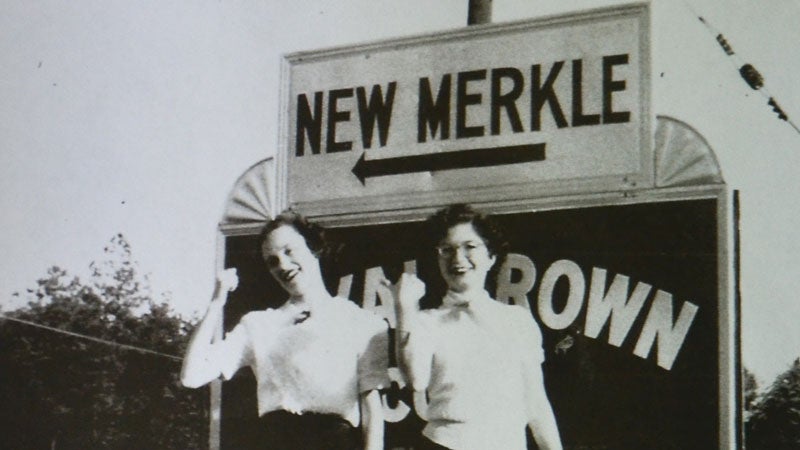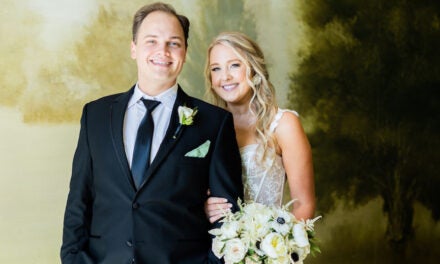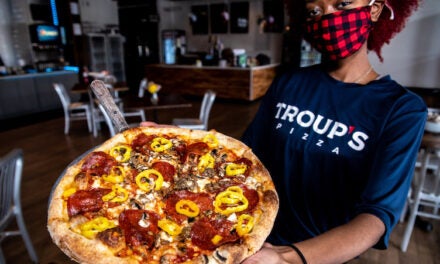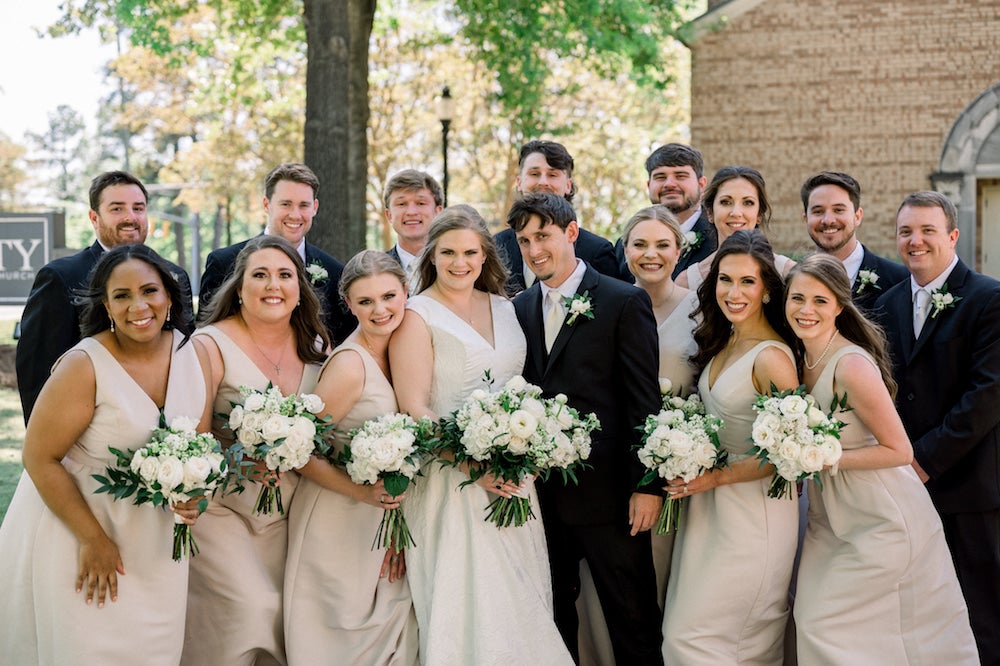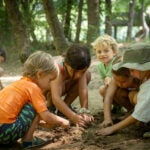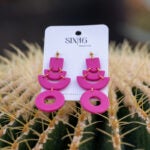There’s something about Cahaba Heights. New restaurants and shops are popping up all the time, but its past goes back much farther to its days as New Merkel—and all the years in between. No matter the time period though, those who call it home have invested in its streets and its people.
There are people like Katherine McRee who not only own businesses in Cahaba Heights and work to promote shopping locally but also sent their kids to the elementary school down the street. There are people like Della Fancher and Lane Brown who both grew up here and now find themselves, in some way, back in the neighborhood they grew up in, making it a better place. And then there are people like Norma and Eugene Sample who’ve been calling this place home for decades, and the whole community seems to know them by name. Here are their stories of Cahaba Heights, new and old.
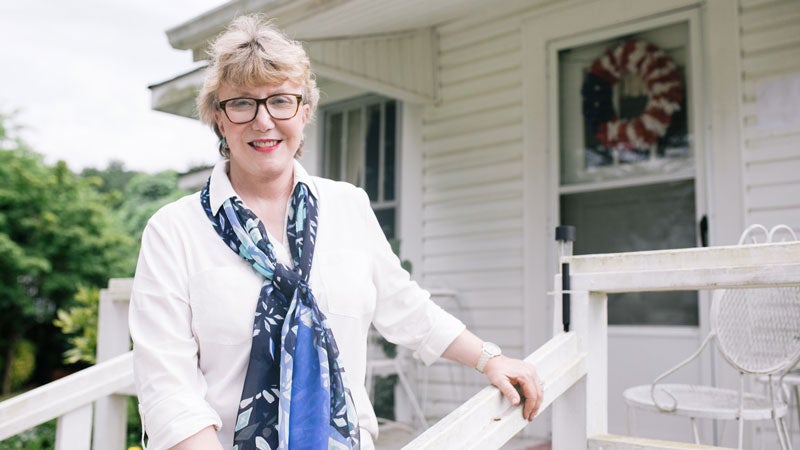 Della Fancher: The Activist who Protects her Hometow
Della Fancher: The Activist who Protects her Hometow
Every first Thursday of the month, Della Fancher chats with her friend Pat Donovan Hope. In fact, their friendship began in their fourth-grade class at Cahaba Heights Elementary. “Cahaba Heights people tend to hang on to each other,” Della says, reflecting on her simple childhood in the community.
When she was only 18 months, Della’s family moved to their home in Cahaba Heights in 1949. Well, when they moved there, it was a town called New Merkel. Of a different name, it was also a different time. “There was no fear. We could ride bikes anywhere. We could decide to go see our Sunday school teacher or to go to Davis Drugstore and get a Vanilla Coke,” she says. “My mother was a fearless mother, but there just wasn’t a worry.”
Della knew all her neighbors, and her house was the center of her elementary school community. “My world was the school, Philadelphia Baptist Church and my grandparents in Shelby County,” she says.
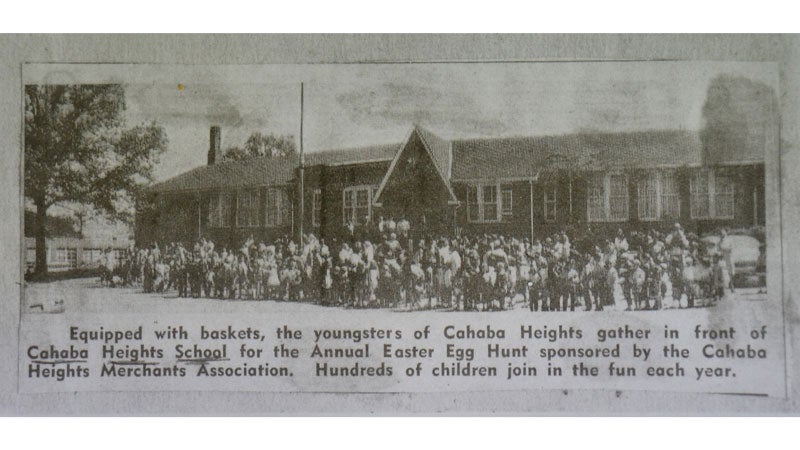
Even even when she left that world once she grew up, Cahaba Heights is still home for Della. She worked in Atlanta and Dallas, moved to Homewood and then noticed billboards and metal buildings that diminished the community she knew. But they were legal in Jefferson County.
So, Della protected her home through the Cahaba Heights Citizen’s Association. In 1990, the group began planning smaller projects, like creating a park, to improve Cahaba Heights, but they were also seeing pieces of Cahaba Heights being annexed into different cities.
“What you want is to create the change, not have someone change it for you,” she explains. After the Citizen’s Association researched annexation plans and meddled with options, Vestavia Hills annexed the area 2002 to help maintain the charming neighborhood Della envisioned. “But even so, we will always be Cahaba Heights inside of Vestavia,” she says. That close community didn’t lose its essence at all, Della made sure.
Della now owns her parents’ Cahaba Heights home and the house next door, previously owned by her neighbors who were practically family. “I’ve just always felt I was from Cahaba Heights.”
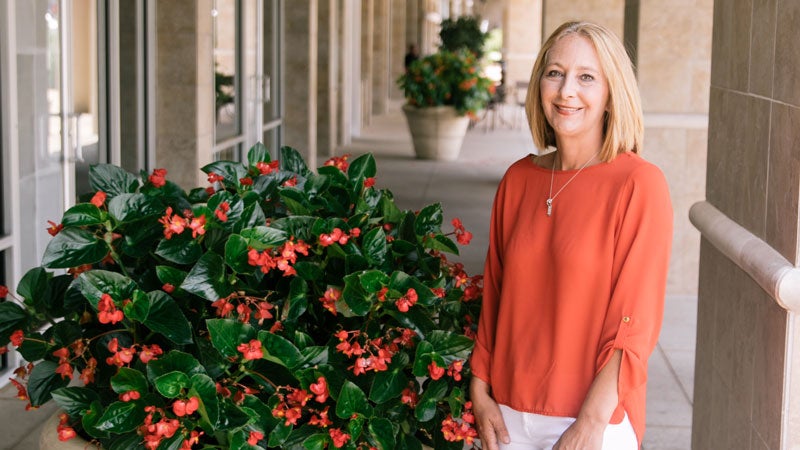 Katherine McRee: The Business Owner who Embraces the Eccentric
Katherine McRee: The Business Owner who Embraces the Eccentric
Within the small Heights Village shopping center parking lot, GiGi’s Teen managed to draw about 2,000 girls to their store on a hopeful, hot Saturday in 2014. After being rejected by the Galleria, social media star Cole LaBrant came to the boutique for a meet-and-greet. Expecting a simple crowd of 100 girls, co-owner Katherine McRee was met with thousands, some from outside of Alabama, banging on the windows and crowding into the store to meet the viral high school boys.
Really, it’s the type of thing that would happen in Cahaba Heights. “It’s quirky,” Katherine says. “Everything is so different, in a good way. It’s very inviting. You can just be you and feel normal here.”
Since she moved with her family to Vestavia Hills and later opened The Lili Pad and GiGi’s Teen with her sister Susan Day in 2004, Katherine’s learned the ins-and-outs of the neighborhood, especially the business district. Through events like Deck the Heights, she and the newly formed Cahaba Heights Merchants Association work to promote community through local businesses. The many types of small businesses in the area reflect the joyful and eclectic spirit Katherine describes when they all come together. “Nothing is uniform, and it’s okay to be different,” she says.
Beyond just creating community events, Katherine and others around her are working on beautification projects in Cahaba Heights and fundraising through events like this spring’s Heights Hangout. First up they are making plans for the corner of Cahaba Heights Road and Dolly Ridge Road, right by the Chevron, with a vision to add a mix of landscape and hardscape with a modern, backlit “Cahaba Heights” sign.
With the area’s mix of businesses and people comes a closeness, especially because so many business owners live close to the area like Katherine. “It’s fun because there are still people shopping here who’ve been shopping since we opened,” she says. “We were first close because the school was so small. After the tornado, everybody really came together even more.”
Katherine and her sister Susan helped during the week of the 2011 tornado, sitting in the Heights Village parking lot to pass out supplies. Already tightly-knit through its smallness, the community pieced things back together and lifted each other up. “It’s not stuck up,” she says. “It’s not your typical village or neighborhood where everything’s the same. It has its own identity.”
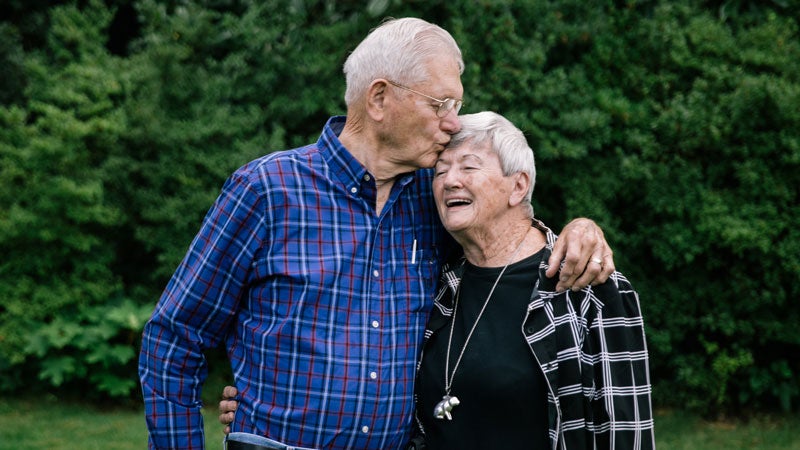 Norma and Bunny Sample: The Volunteers who Bring People Together
Norma and Bunny Sample: The Volunteers who Bring People Together
It sounded like a bomb went off. However, with the newly built The Summit in their backyard, Eugene “Bunny” and Norma Sample, now 86 and 83, respectively, just weren’t used to fireworks being so close. That was something so different than the Cahaba Heights they knew. Now they can enjoy the lights behind the neighborhood they’ve made home since the 1960s.
That home truly started in the elementary school. Norma had only taught for a few years before getting a job at Cahaba Heights Elementary School and teaching second and fourth grade for 41 years. “It’s just a real good place. You could always tell about it,” she says.
They both remember how the school never lacked any help 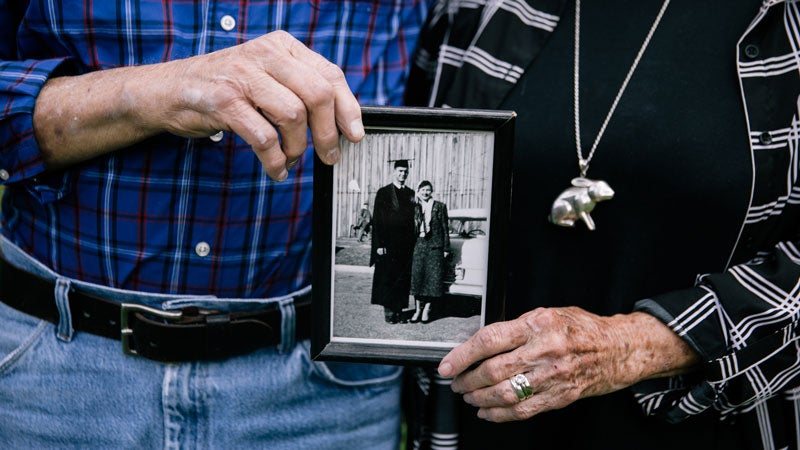 from the community, which made it one of the best. For their first gym, the county asked for the school to raise $20,000 to contribute to the project, and residents raised it in two months. “They wanted a good school, and it really helped,” Norma says, always praising the school and its leadership.
from the community, which made it one of the best. For their first gym, the county asked for the school to raise $20,000 to contribute to the project, and residents raised it in two months. “They wanted a good school, and it really helped,” Norma says, always praising the school and its leadership.
The parents were always “really interested,” Bunny says. When the school needed paper, parents provided it. When they were funding a new project, families came out to participate in events to raise money. And even outside the school, that seems to be the spirit of Cahaba Heights to the Samples. “When something happened, we all felt it,” Norma says.
Bunny has helped with all kinds of projects to help the neighborhood, whether it’s rebuilding parts of the school or helping save the New Merkel Senior Center by moving it across the street. “A lot of the work they did, they just did,” Norma says. People came together for their community and to make it better. It’s really that simple. Now, they’re both at the senior center at least once a week, always inviting people in to come together.
“I just think we were really blessed in having good people and people who were wanting what was best for the children,” Norma says. “There’s good camaraderie out here.”
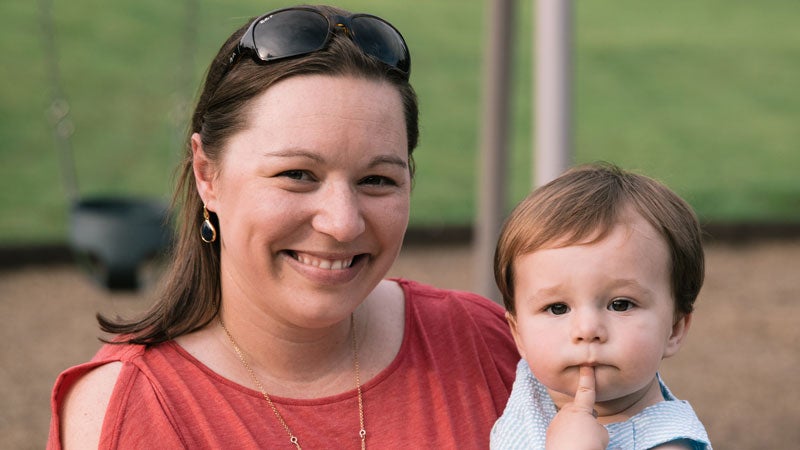 Lane Brown: The Resident who Returned Home
Lane Brown: The Resident who Returned Home
How could anyone not love Doodles? Her son Davis just turned one, but Lane Brown already knows he loves the Italian ice staple, the same one she remembers enjoying as a kid. Originally on Sunview Drive, the shop was in a tiny, usually crowded shack right next to the old Western Supermarket. “We’d go hang out in the Western parking lot,” she says. “That was the place to be.”
Like Della, Lane left Cahaba Heights for college but came back in the neighborhood with her husband four years ago. When the couple started looking for places to live right after finishing school and getting engaged, Lane knew it had to be the neighborhood she’d long known as a child. “It’s just such a welcoming community, and it’s so homey. You know your neighbors, and you know the local business owners,” she says. Davis could even have the same kindergarten teacher she did.
And Lane is working with others to make it even better too. As a part of the executive board for the Cahaba Heights Community Foundation, she’s planning events that will bring families together and provide avenues for people to meet others in the community outside the schools. For about a year and a half, the organization has been running movie nights in Meadowlawn Park and the Heights Heroes 5K and Fun Run to raise money for the elementary school.
And Lane and her family can get to these events on foot too. “From my house, we can walk to Heights Village or to the new Martin’s Bar-B-Que. In other parts of Vestavia, there aren’t a lot of places where you can do that,” she says, noting the physical smallness of the town really does bring everyone together and make it a unique home.
That’s stayed the same since Lane has come back to her old neighborhood too. “What’s interesting to me is how many people who grew up here came back to Cahaba Heights. You see generations,” she says. There are a lot of young families moving into the area, which is new for the community. “I actually run into a lot of friends I grew up with who have all moved here, and now they have kids.”
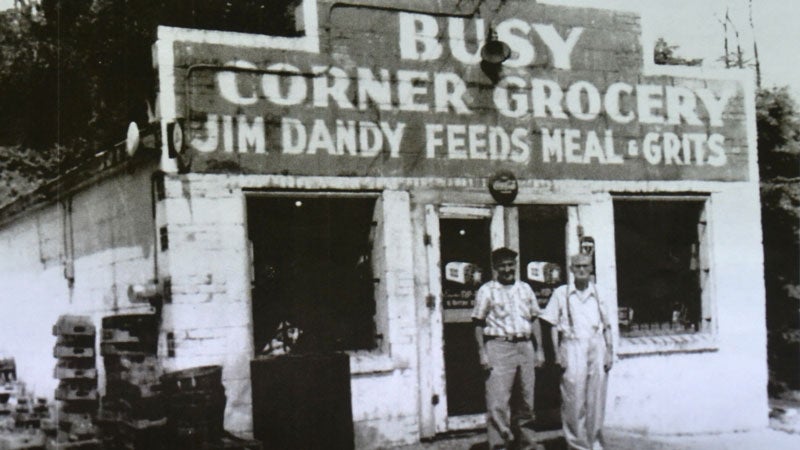 Cahaba Heights through the Years
Cahaba Heights through the Years
1887
The town of Merkel moved down a few miles to become New Merkel and grew around the Cahaba Pumping Station, named after Water Works superintendent W. A. Merkel. (The true spelling has been lost over the years, so now it’s often spelled “Merkle.”) It started out with a rough reputation, known as a center for bootleggers and moonshiners.
1906
New Merkel School, now Vestavia Elementary Cahaba Heights, opened with principal E. A. Hollis and was moved to its current location in 1925.
1953
New Merkel changed its name to Cahaba Heights to reinvent their reputation. It was still known to some to have a rough community (even though the worst thing Della Fancher remembers hearing is that some disgruntled Cahaba Heights teenagers threw a skunk into Davenport’s).
1994
The New Merkel House opened as a center for community gatherings. It is often used as a senior center, and it was named New Merkel to tie the new Cahaba Heights community to its past.
2002
Cahaba Heights was annexed into Vestavia Hills by the Vestavia Hills City Council.
2011
The devastating April 27 tornadoes came through the community and tore apart the area. Residents and business owners came together to help during the crisis and to begin rebuilding.

